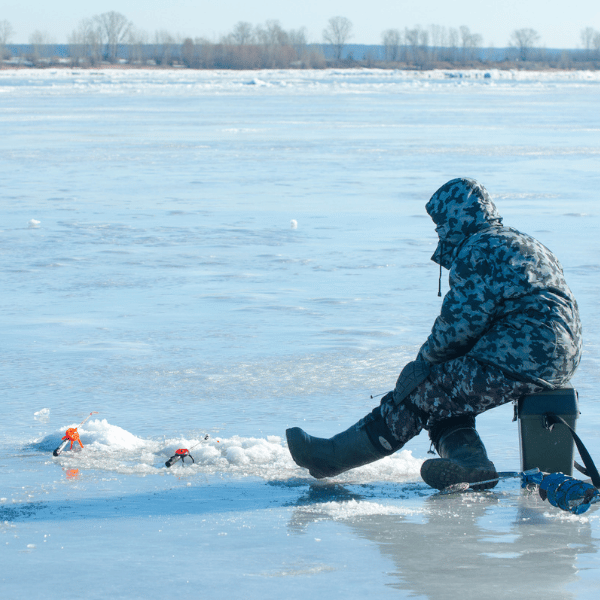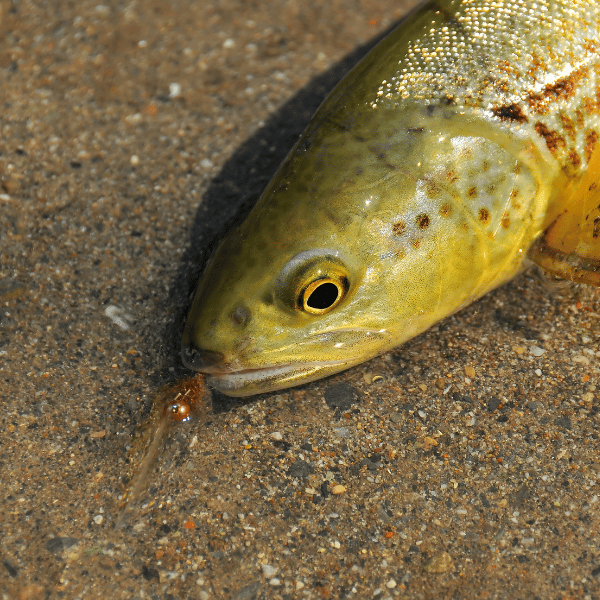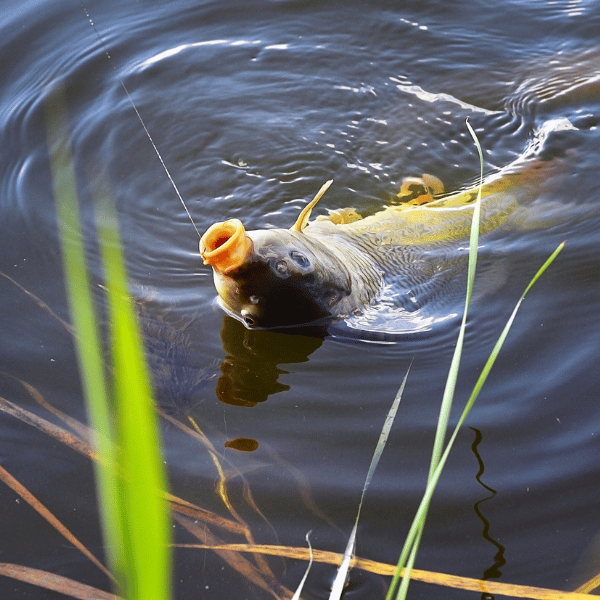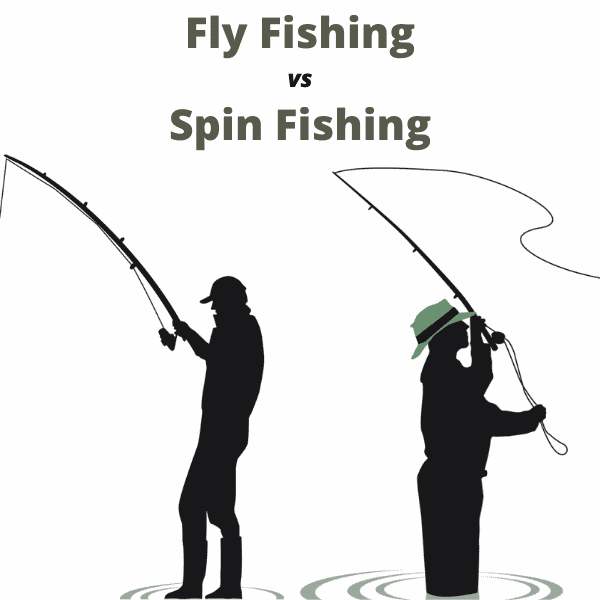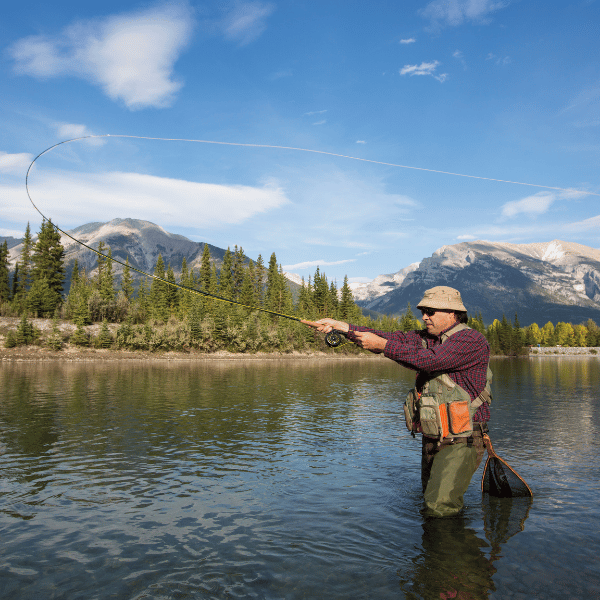How To Catch Brook Trout Ice Fishing
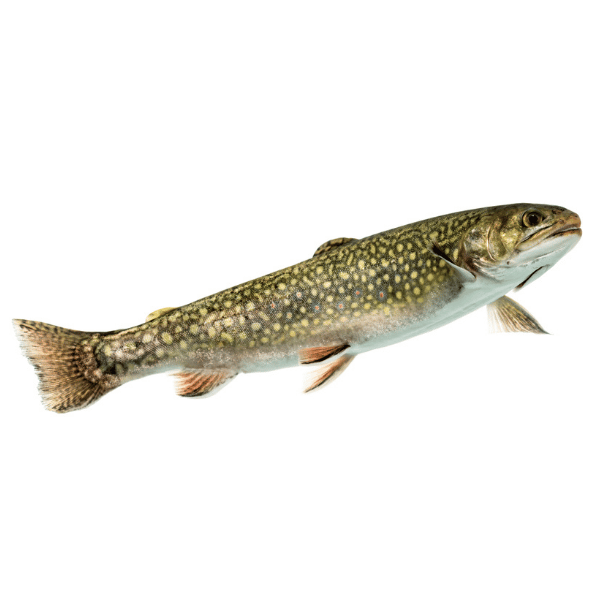
Learning how to catch brook trout ice fishing does require different knowledge than catching other fish ice fishing.
In this guide on how to catch brook trout ice fishing, we will show you the kind of jigs to use while ice fishing, our best ice fishing tips for catching brook trout, and the best places to look for them.
Contents
How To Catch Brook Trout Ice Fishing

Knowing how to catch a brook trout while ice fishing is easier than you think. It’s all about finding the right place and taking your time catching them.
Indeed, brook trout will be found in brooks and rivers. Thankfully, there will be large or wide parts of the river that will be frozen over to a point where it can handle a small ice fishing shack. You can keep warm and still have some success catching brook trout.
With that said, here’s how you catch brook trout ice fishing:
Find a Shallow Depth of Water
Shallow shorelines tend to be hotbeds for brook trout.
How do you define shallow waters?
Typically, water depths of two to ten feet are considered shallow. With that said, you’ll want to find these shallow shorelines to determine if you’re in a good place.
To find a potential spot that you might like, look for the following: sunken logs, vegetation that is visibly underwater, boulders, and a sizable presence of baitfish and aquatic invertebrates. Where there is a large number of these, you know that it’s a good feeding source for trout (and therefore a great place to set up shop and catch one).
Look for Inlets
If shorelines may not be a good choice, then see if there’s an inlet that you want to check out. Moving water is common in inlets and creates the perfect environment for baitfish and other aquatic creatures. However, one caveat to note is that the water temperature in and around inlets will be slightly higher than the rest. This means the ice will be much thinner. Use caution when ice fishing at inlets.
Use Small Baitfish
Worms or nightcrawlers obviously won’t work to your advantage in an ice fishing setting. Ideally, you’ll want to use small baitfish that are no larger than 2 inches. Larger fish for bait will not work in your favor.
Brook Trout Ice Fishing Jigs
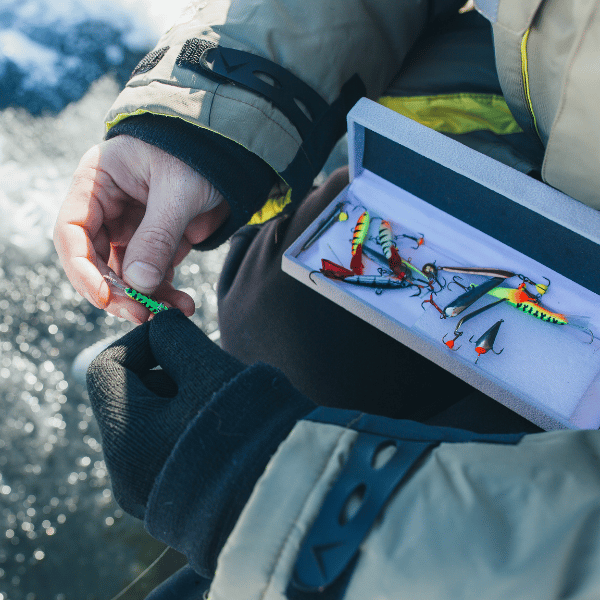
While baitfish is usually the reliable option for ice fishing brook trout, it might not be wise to rely on just that. That’s why it’s always a good idea to keep some jigs handy.
Jigs are colorful and will move around in the water. Brook trout are interested in bait that has signs of life. If they see a baitfish that is motionless, then they will have no interest in it.
So what exactly are some of the best jigs for ice fishing brook trout? Let’s take a look at some that you might enjoy using:
Swedish Pimple
Most Swedish Pimples are light in color. And it is for this reason that they are one of the most productive and popular ice fishing jigs in the business. They are also small in size (and therefore a bullseye for brook trout since they prefer small bait). For best results, solid colors with metallic bodies like brass will do the trick.
Acme Kastmaster
This jig is second to none when it comes to durability. It can handle a good amount of abuse. Not to mention, it’s a favorite among those who fish on both saltwater and freshwater. Since there really isn’t a wrong way to ice fish with these jigs, you can consider using these if you are a complete newbie to ice fishing.
Rapala Jigging Shad Rap
Light in color, versatile, and can move like crazy. Nothing will bring a brook trout closer than this kind of jig. Since the trout will eat a lot in the winter, nothing will stand in the way between them and any small thing that moves. This is the perfect jig for whenever you want to catch brook trout and you want to waste no time doing so.
Brook Trout Ice Fishing Tips
Now that you know how to catch brook trout during ice fishing, it’s important to know some of the best tips as told by those who have plenty of experience. Whether you are new to the game or have done this for years, there’s always the chance of learning something new.
Keep reading and check out the following tips below:
“Early Bird Gets the Fish”
If you are an early riser, you have the advantage. Typically, brook trout will be the most active around daybreak. You’ll have at least until sunrise or an hour afterward to catch a fish. Two to three hours after that, that’s when you’ll notice a decline in activity. Any time beyond 9 or 10 am maybe a waste of time.
Keep a Vigilant Eye on the Weather
During the winter, the weather reports will be your best friend. That’s because you’ll be staying in the loop regarding snowstorms, wind chills, and even subzero temperatures. But the one thing you need to watch is low-pressure systems passing through. The best indicators of this happening is plenty of sunshine and a combination of bitter cold temperatures and some constantly blowing winds.
During this time, brook trout won’t be as active. Wait at least two days after a low-pressure system has passed through your area before you start digging into the brook, river, or lake. Speaking of low-pressure systems, if one is anticipated within the next day and a half, this is the perfect time to go fishing. That’s when the brook trout will tend to eat more.
Check Your Baitfish Often
Your baitfish will need to be checked on every half or full hour. It doesn’t matter if your flag hasn’t moved an inch. Believe it or not, many fish have come under the radar to successfully eat the baitfish without raising the flag (and yes, that does happen).
Have Multiple Spots Picked Out
You can hit one part of the water and have good luck. But it can’t be the only place you want to rely on. If you are having excellent luck in one spot, see if you can find some place different. The best thing to do is keep it within a 15-foot radius of your go-to spot. If you can find success in one spot, you’re bound to find the same within that distance.
Best Places To Ice Fish For Brook Trout
If you are looking for the best places to ice fish for brook trout, you may know that we’ve already mentioned a couple of good places. Inlets and shorelines where shallow water is prevalent are your two best places.
Other places include drop-off points where shallow waters meet with even deeper points. Before you consider the idea of setting up a shop, make sure that the ice is thick enough. If you’re near a body of water where it flows into a larger body like a lake, that’s prime real estate for catching brook trout.
There really is no guarantee of whether or not you’ll hit paydirt. But these are some of our favorite go-to spots whenever we feel the need to catch a brook trout. And these are high probability areas if the conditions are right.
Remember to check on these conditions like the weather (i.e — low-pressure system coming or going?) and determine whether or not it’s a good time to go ice fishing or not. And remember, you might not be the only person out and about early in the morning.
That is why we stressed earlier on to find other spots aside from your usual “honey hole”. Some may even take advantage of where you usually go and others may not.
How to Catch Brook Trout FAQ
Live and natural bait. Also, you can do good with some jigs and small baitfish like minnows, wax worms, and salmon eggs to name a few.
Minnows are usually active in the wintertime (as well as crawfish). Keep in mind though that a brook trout may not travel far to get what they want to eat.
Typically, shallow depths are where you need to be. On average, brook trout tend to hang out in areas where the water is anywhere between 2 to 10 feet. Also, drop-offs that are closer to deeper parts of lakes, streams, and rivers are also your best bets.
